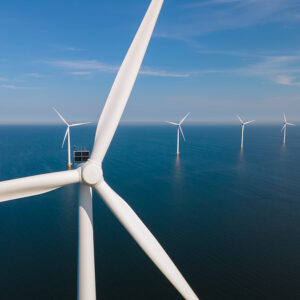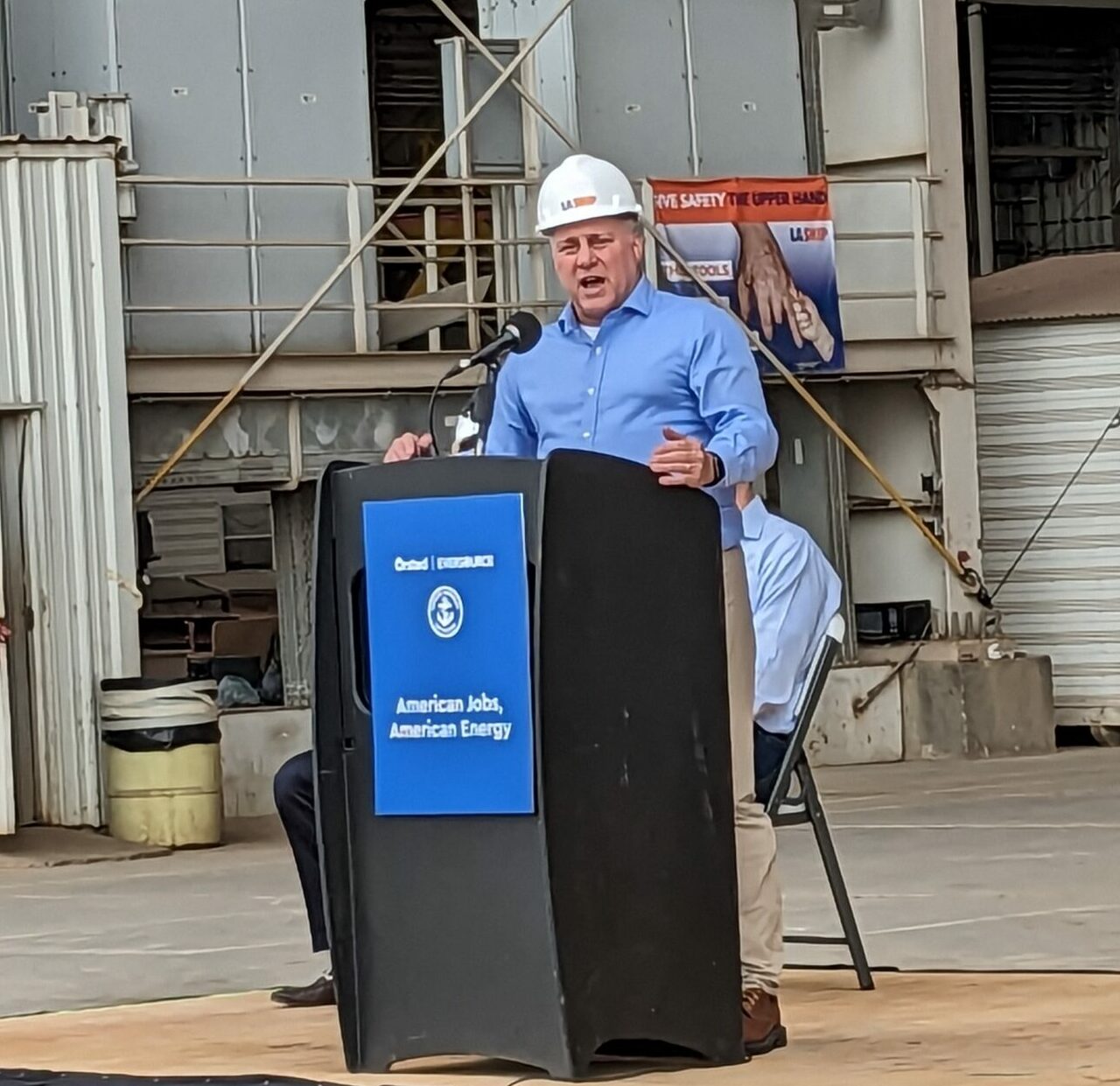Longshoremen’s Union Uses Hardball Tactics to Target Offshore Wind

It looks like Bidenomics brought to life: Union labor and green tech companies signing a landmark agreement to work together building carbon-zero windpower for American consumers.
But in a classic case of “no good deed goes unpunished,” one recalcitrant labor union is risking all this work.
When Vineyard Wind was planning its 62-turbine wind project 15 miles south of Martha’s Vinyard, it reached an agreement with the Southeastern Massachusetts Building Trades Council. Vineyard Wind said the deal would save ratepayers $1.4 billion over 20 years while creating “roughly 500 family-sustaining union jobs.”
“The signing of this Project Labor Agreement sets the standard for Offshore Wind and other renewable energy projects across our country,” said Frank Callahan, the president of the council. “We can Build Back Better with renewable energy and create union jobs at the same time.”
Meanwhile, Denmark-based Orsted, the world’s largest offshore wind developer, had a more ambitious East Coast wind power plan. Its South Fork Wind project will build a dozen turbines that will generate 130 megawatts of electricity off the coast of Connecticut and Rhode Island. Orsted hopes to power 70,000 Long Island homes once the project becomes operational.
Orsted’s National Offshore Wind Agreement (NOWA) with North America’s Building Trades Unions (NABTU) was greeted with great fanfare.
Signed by more than a dozen international union presidents, NOWA caused NABTU President Sean McGarvey to hail it as revolutionary. “This partnership will not only expand tens of thousands of career opportunities for them to flourish in the energy transition but also lift up even more people into the middle class. The constant drumbeat of public support for unions being important to maintain and build the middle class helped secure this momentous achievement.”
But now, these projects face delays and rising costs due to demands for a piece of the project pie from the International Longshoremen’s Association (ILA). The ILA is a union notorious for its hardball — and sometimes illegal — tactics. A decade ago, the president of one of its East Coast locals, 1235 in New Jersey, was sentenced to 18 months in prison for extorting money from his own members using “actual and threatened force, violence and fear,” according to the U.S. attorney’s office.
And just last year, the president of ILA-1740 in Puerto Rico was busted as part of a RICO Act prosecution of an extortion scheme.
In this case, the ILA uses accusations of union busting and labor violations to slow these two major wind projects. For example, work briefly halted at the Vineyard Wind project earlier this year when ILA Local 1413 in New Bedford, Massachusetts, complained that the project’s agreement with the building trades council set a bad precedent. At issue is whether ILA or the tradesmen will operate forklifts and massive cranes unloading turbines.
And Orsted is facing pressure from international unions backing complaints from the ILA in New London, Connecticut. The union alleges Orsted refuses to respect longshore worker jurisdiction regarding wind turbine operations.
While Vineyard Wind officials declined to go on record, Orsted decried the union’s complaints as counterproductive.
“This is a jurisdictional dispute between two unions, and we remain hopeful that they can resolve the issue,” said Allison Ziogas, Orsted’s head of U.S. labor relations. “South Fork Wind is putting more than 50 local union members across seven unions to work at State Pier in New London, including the local International Longshoremen’s Association that has led the offloading and loadout of offshore wind components for months. … As always, our priorities are safety, maximizing roles for local union workers, and keeping South Fork Wind’s schedule on track.”
Orsted and Vineyard Wind say they’ve carefully followed federal law in the pre-hire agreement process. Now, they say, it’s time for the Biden administration to step in as a matter of law and support the zero-carbon power built with union labor that President Biden has promoted.
While union strikes or job walk-offs get plenty of press, they also cost millions. The Labor Department estimated striking workers accounted for 7.4 million lost man-hours this year. Most of those involve the Hollywood writers’ and actors’ strikes.
With strikes come construction delays and increased costs. Orsted leadership reported a $2.3 billion loss through August in the United States due to supply-chain issues and interest rate increases. The company declined to say how much it lost in the ILA’s recent one-day walk-off.
Labor experts like Sean Higgins at the Competitive Enterprise Institute note that private-sector unions are shrinking, not growing. That is one reason they should pick their fights carefully. He said just 6 percent of private-sector jobs are unionized, and overall, union members hit an all-time low of 10.1 percent of the workforce in 2022.
“As the economy has grown, the union movement hasn’t grown along with it,” Higgins said. “As new industries have sprung up, unions have struggled to organize them.
“What the union movement has yet to try is to radically rethink how it operates and organizes,” he said. “Until it seriously tries to listen to those workers and find out what they want, it will continue to struggle.”
McGarvey came to the defense of Orsted. “Their investment in, and commitment to, the communities in which they have begun operations will provide local residents generational opportunities to participate in the emergence of an industry and technologies that will be a crucial part of our domestic energy future.
“It is deeply regretful that another labor organization, ill-prepared to meet the moment, has instead sought to undermine union employment opportunities for our members,” McGarvey said. “A safe and reasonable path forward has been presented to the ILA. We call upon this organization to immediately end their threats and obstruction and to work in good faith to bring this dispute to an end.”



